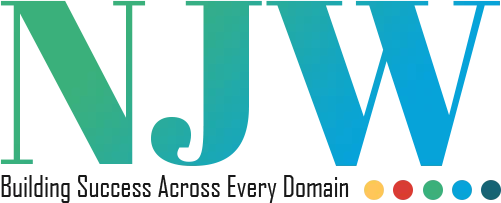How to Buy Cash Flow?
Have you ever heard someone say, “I make money while I sleep”? That might sound like a dream, but for many people, it’s real. They do it by buying cash flow.
But what does that mean? How can you buy cash flow? Is it legal? Is it easy? In this blog, we’ll explain everything in simple words, so even if you’re new to this topic, you’ll walk away with a clear idea of how it works and how you can get started.
What is Cash Flow?
Cash flow simply means money coming into your pocket regularly.
Imagine you own a vending machine. Every time someone buys a snack, you earn money. That’s cash flow. It’s income you receive consistently—weekly, monthly, or yearly—without needing to work for it every day.
In the world of money and investments, buying cash flow means investing in something that gives you steady income.
Why Should You Care About Buying Cash Flow?
There are many reasons why buying cash flow is a smart financial move:
- ✅ Financial Freedom – You earn without working every day.
- ✅ Security – It adds extra income even if your job ends.
- ✅ Wealth Building – It grows your money over time.
- ✅ Less Stress – You have passive income to cover bills or save.
Instead of only working for money, your money starts working for you.
Ways to Buy Cash Flow
Here are the most popular and trusted ways to buy cash flow:
1. Real Estate Rentals
How it works:
You buy a property (like a house, apartment, or commercial space) and rent it out to someone. They pay you rent every month.
Example:
You buy a small house for $100,000. You rent it for $1,000/month. After paying taxes, repairs, and other costs, you keep $700/month as profit. That’s your cash flow.
Pros:
- Long-term income
- Property may increase in value
- Tax benefits
Cons:
- Requires money to start
- Property management can be stressful
- Risk of bad tenants or maintenance costs
2. Dividend Stocks
How it works:
You buy shares in companies that pay dividends. These companies give a part of their profit to shareholders regularly (usually every 3 months).
Example:
You buy $10,000 worth of dividend stocks. If the average return is 5%, you earn $500 a year in dividends.
Pros:
- Easy to buy and sell
- Grows over time
- Can be low-maintenance
Cons:
- Stock market risks
- Dividends are not guaranteed
- Requires knowledge and patience
3. Buy a Small Business or Franchise
How it works:
You buy a business that already makes money—like a coffee shop, laundry service, or online store. You let someone else manage it, and you earn from the profits.
Example:
You buy a small coffee shop that makes $3,000/month in profit. After paying the manager and costs, you keep $2,000/month.
Pros:
- High income potential
- Many business options available
- Can be hands-off with a manager
Cons:
- Needs money and research
- Risk if business fails
- Time and effort to find the right one
4. Peer-to-Peer Lending or Notes
How it works:
You lend money to individuals or businesses through platforms like LendingClub or Fundrise. They pay you back with interest.
Example:
You lend $5,000 at 10% interest. Over time, you get back $5,500. That $500 is your cash flow.
Pros:
- Low starting investment
- Predictable payments
- No physical asset to manage
Cons:
- Risk of non-payment
- Not easy to resell
- Returns may be low after fees
5. Royalties from Intellectual Property
How it works:
You buy rights to music, books, or products and earn a percentage whenever they are sold or used.
Example:
You buy rights to a song. Every time it plays on the radio or is used in a video, you get paid.
Pros:
- Truly passive
- Can earn for many years
- Unique investment
Cons:
- Hard to find or understand
- Income can be unpredictable
- Legal and licensing knowledge needed
How to Start Buying Cash Flow?
Here are the steps to follow if you want to get started:
Step 1: Understand Your Budget
Ask yourself:
- How much money do I have to invest?
- Do I want to start small or go big?
You can start with $100 (dividend stocks) or $100,000 (buying property). Choose based on your situation.
Step 2: Choose the Right Option
Pick what suits you best:
- Want something simple and online? → Try dividend stocks or peer-to-peer lending.
- Want long-term security and control? → Consider rental property or small business.
Do your homework before making any decision.
Step 3: Research and Learn
Never invest without understanding where your money is going. Watch videos, read books, talk to experts, or take short online courses.
Some helpful topics:
- How real estate works
- Stock market basics
- Business management
- Legal tips for contracts and taxes
Step 4: Take the First Step
Start small. Buy your first dividend stock. Try a crowdfunding platform. Partner with a friend on a small business. Experience is the best teacher.
Step 5: Monitor and Grow
Once you start earning cash flow, don’t stop there! Look for ways to grow it:
- Reinvest your earnings
- Diversify your sources
- Learn from your mistakes
Buying cash flow is a journey, not a one-time thing.
Mistakes to Avoid
Many beginners make these mistakes. Watch out for them:
❌ Chasing high returns without research
❌ Putting all your money in one thing
❌ Ignoring taxes and legal rules
❌ Not keeping records or tracking income
❌ Falling for “get rich quick” scams
Stick to real, legal, and proven ways. Slow and steady wins the race.
Final Thoughts
Buying cash flow is one of the smartest ways to create financial freedom. It means your money works for you, instead of you working all the time.
Whether it’s rent from a property, dividends from stocks, or profits from a business, cash flow brings peace of mind and helps you build wealth over time.
Also Read:
- What Do Tax Preparers Do in the Off-Season?
- What Should You Consider When Choosing Accounts Payable Services?
- Why Is the Balance Sheet Not Balancing?
Frequently Asked Questions
What does buying cash flow really mean?
Buying cash flow means investing your money into something that gives you regular income. This could be rent from a property, dividends from stocks, or profits from a business. It’s a way to earn money even when you’re not actively working all the time.
How much money do I need to get started?
You don’t need a lot of money to start buying cash flow. Some options like dividend stocks or peer-to-peer lending can start with just $100. However, for real estate or buying a small business, you may need thousands. Start small, learn, and grow from there.
Is buying cash flow safe for beginners?
Buying cash flow is safe if you research and choose wisely. Like any investment, there are risks, but with the right knowledge, you can reduce them. Don’t invest in something you don’t understand. Start with small, low-risk options and grow as you learn more over time.
What are the easiest ways to buy cash flow?
The easiest ways to start are dividend-paying stocks or real estate crowdfunding platforms. These require less effort and can be done online. Rental properties and small businesses need more involvement, but they often offer bigger returns. Choose what fits your time, skills, and budget best.
Can I make a living just from cash flow?
Yes, many people live off their cash flow investments. It may take time to build, but it’s possible. The goal is to earn enough monthly income from your investments to cover your living expenses, so you don’t have to rely on a 9-to-5 job forever.


